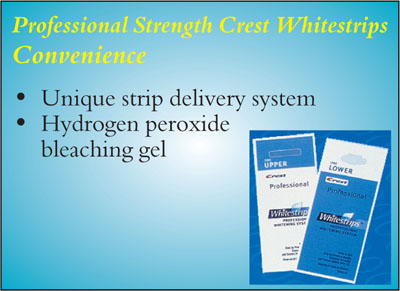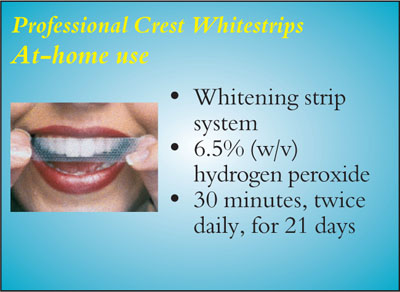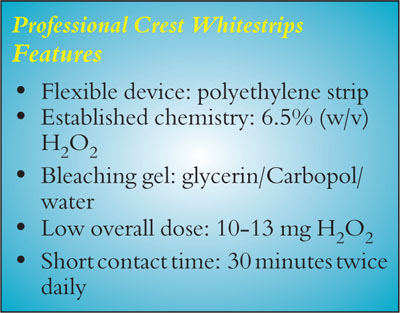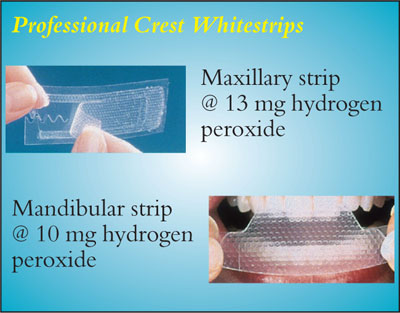Chapter 6
Over-the-counter Bleaching Products
Aim
The aim is to familiarise practitioners with the range and use of over-the-counter (OTC) products and the problems associated with this approach to bleaching.
Outcome
Practitioners will be more familiar with the appearance issues surrounding the use of unsupervised over-the-counter products.
Introduction
Unsupervised bleaching can be cost-effective for some patients but has certain limitations and drawbacks. Restorations can appear mismatched in shade following such bleaching.
Bleaching Strips
The use of intraoral strips to deliver therapeutic agents or other substances is not new. In the past, strips have been used to deliver, for example, topical steroids in the management of conditions such as aphthous ulceration. In the past five years, a number of over-the-counter bleaching systems have been developed. These are supplied by a pharmacy or simply purchased in a supermarket without any input or prescription from a dentist.
Bleaching strips are of varying thickness and are available with different concentrations and amounts of bleaching agents. Pre-packaged products are available for maxillary and mandibular teeth. They are available in a variety of shapes, sizes and packaging, usually designed to entice consumers into the popular and lucrative market of tooth bleaching. The sale of over-the-counter bleaching systems represents huge business worldwide. Figs 6-1 to 6-4 give an example of bleaching strips available over-the-counter.

Fig 6-1 Professional Crest Whitestrips (Procter and Gamble).

Fig 6-2 Hydrogen peroxide content of strips.

Fig 6-3 Features of strips.

Fig 6-4 Bleaching strips contain 5–16% hydrogen peroxide.
Randomised, controlled clinical trials have shown that bleaching strips containing 10% hydrogen pe/>
Stay updated, free dental videos. Join our Telegram channel

VIDEdental - Online dental courses


